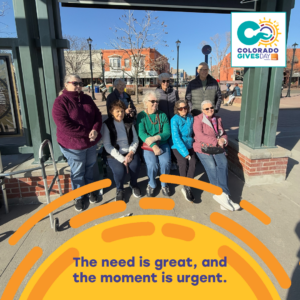The focus of much of the May TAC meeting was on next steps for developing the 2050 Metro Vision Regional Transportation Plan (MVRTP). DRCOG staff shared the proposed major project types/categories for the 2050 MVRTP Priority Investment Framework: air quality regionally significant roadway capacity projects, air quality regionally significant rapid transit capacity, multimodal safety, active transportation, regional transportation operations and technology, and freight and goods movement. Staff also shared information related to identifying and soliciting proposed fiscally constrained candidate projects and what the process for choosing projects might look like. The TAC will have continued conversations soon about these next steps due to approaching deadlines for the plan to be completed. TIP Covid 19 impacts were also discussed as was DRCOG’s upcoming Federal Planning Certification Review.
Take what you know about the complications and hurdles COVID-19 has thrown into most Colorado lives since March. Then imagine navigating all that while living with a significant disability, and multiply what you were thinking by many times more. Read more
When Paul Ballard took over as the Regional Transportation District’s interim CEO and general manager back in late February, the agency was in the midst of a system-wide overhaul, a crippling driver shortage that led to service cuts and strained staff, one commuter rail line delayed by a few years, and another by three decades. Read more
The Denver Office of Immigrant & Refugee Affairs promotes greater awareness and integration of immigrant and refugee residents in Denver. We partner with nonprofits, community based organizations, residents and government agencies to develop and implement policies, practices and programs that influence the various paths of immigrant integration. Read more
The stay-at-home mandates resulting from the COVID-19 pandemic will have a lasting impact on how we approach dangerous illnesses and public health. Long-term solutions will need to be implemented to keep susceptible people safe from future outbreaks. We will also need new tools and processes to support our family members when quarantining is required to avoid illness. Read more
A couple of weeks after Jump bikes stopped showing up on the Uber app, the company, now owned by Lime, will redeploy the vehicles in Denver on Friday. Read more
![DRMAClogo[1] DRMAC](https://drmac-co.org/wp-content/uploads/2019/12/DRMAC20logo1.jpg)






